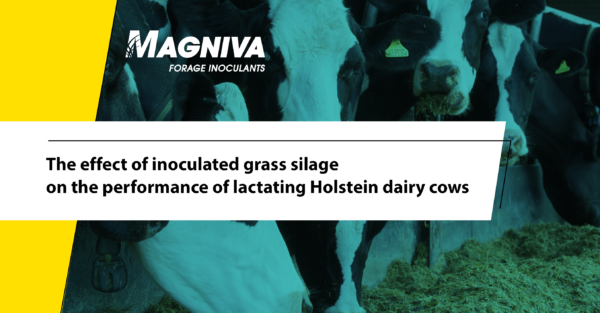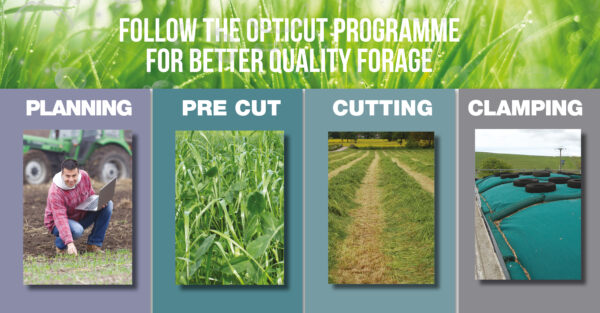Blog | Reading Time 3 minutes
Maximising the quality of grass silage: essential tips for farmers
Learn how to produce top-quality silage for dairy herds with our guide on planning, making, and preserving silage to maximise milk from forage.
Early engagement with experts is key
Silage making begins with strategic planning which involves several elements:
- Work with your nutritionist to create a forage budget that reflects your system’s needs. Understand how much and what quality of grass silage you need for next winter.
- Create a nutrient management plan with your agronomist to make sure the crop has all the nutrients to meet its growth potential.
- Remember, a flexible plan allows for adjustments in response to weather changes, while helping secure the best prices for fertilisers and ensuring contractor availability.
The importance of pre-cut grass sampling
Pre-cut grass sampling will help determine the best time to cut silage. This process should start two weeks before your previous year’s cutting date.
The test assesses the nitrate levels, NDF, and sugar content giving steer on the best cutting time.
Pre-cut testing before at least the first three cuts allows you to respond to variations in grass growth. This enables more accurate decision-making when it comes to silage cutting times.
The advantages of using a silage additive
The use of inoculants, or silage additives, is crucial for enhancing silage preservation.
Trials in the UK have shown that inoculants can improve the stability of grass silage. This can increase the amount of feedable dry matter (DM), and boost milk yields.
The MAGNIVA range includes specifically formulated inoculants that improve silage quality, palatability, and reduce total DM losses.
Investing in a quality inoculant often results in a notable return on investment. This makes it a worthwhile addition to your silage production process.
How to prepare your clamp
Effective clamp preparation is an integral part of the silage making process.
A clean, structurally sound clamp is key for storing your first cut, to prevent contamination from residual spoilage microbes from the previous silage. This step ensures your silage remains in the best condition possible until feed-out.
The correct cutting height and wilting for harvesting grass
When harvesting grass for silage, consider factors like cutting height and wilting.
- The stubble height should be between 6-8 cm. Aim to maintain a green appearance in the field post-cutting.
- Timely spreading or tedding optimises wilting, aiming for a DM content of around 30%.
- Wilting grass for over 24 hours can lead to increased DM losses, making the timing of harvest crucial.
How to fill your clamp effectively
The process of filling the clamp is vital for maintaining high-quality grass silage.
- Fill the clamp quickly in thin layers and roll well to achieve good compaction.
- If harvesting spans several days, cover the clamp overnight to protect it.
- Building the clamp in layers that are as flat as possible is key, especially with highly digestible grass, to minimise slippage.
For more advice on making high-quality grass silage, read our Opticut guide.
By following these guidelines, you can improve the silage production process and gain better feed quality and greater efficiency.
Our condition-specific grass silage additive range will help you make better silage whatever your grass condition is:
Published Apr 21, 2024 | Updated Apr 29, 2024
Related articles
Need specific information?
Talk to an expert


